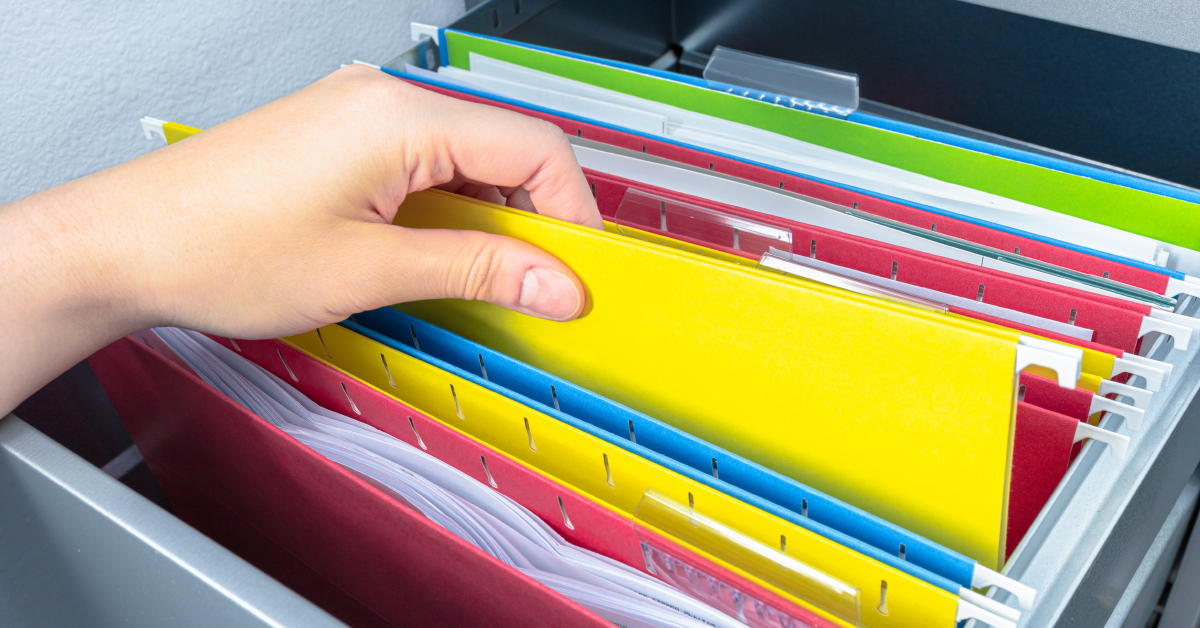Medical Records: Getting Organized for an Emergency

Having the appropriate documents readily available during a medical emergency can potentially be lifesaving. If you haven’t organized your medical records yet, it can be easy to forget vital information that the facility and medical staff may need in order to provide the best diagnosis and treatment.
Follow this helpful guide to learn how to organize your medical information at home.
Locate and keep copies of your medical records
Contact your physician and ask for copies of your medical records. It may be helpful if you let them know that you are in the process of organizing your personal health record. They may assist you in locating your records online or at healthcare facilities and hospitals. A release form needs to be signed, and you will be required to present a valid government-issued photo ID, and potentially pay a fee. If you’re a caregiver and requesting records for someone else, the facility will only release the records if the patient signs an authorization form to disclose records to a third-party form.
Arrange medical history and current health details systematically
Since everyone has a different health history, how you categorize your distinct health history is a personal decision. However, filing your records in chronological order may prove to be very beneficial. Your medical records may contain both current and past health information, such as:
- Details of doctor’s visits (including the date, doctor’s name, and notes)
- Test results, procedures or health screenings with respective dates and results
- Significant illnesses, surgeries or hospitalizations counselling history
- dental, hearing and vision records
- Childbirth history
- Immunization records
- Cancer screenings (such as Pap tests, mammograms, colonoscopies, and PSA tests)
- Essential information required in an emergency (e.g., pacemaker, stent, or hearing and vision issues),
- A list of chronic health problems like asthma, arthritis, diabetes, or high blood pressure, allergies (including food or drug allergies)
- Family medical history of illnesses
- Details of past and current medications, including side effects
List all past and current prescriptions and medications
Make sure to include a record of all current and previous supplements, prescribed medications, and over-the-counter drugs. Write down the drug name, dosage, start and end dates, the condition it is addressing, and any experienced side effects.
Keep track of insurance and billing documents
Organize duplicates of all invoices and receipts from medical facilities, along with any insurance payment documents (i.e., explanation of benefits forms). Maintain records of insurance claims, balances, and payments, and keep a log of phone conversations with insurance representatives. Remember to include a copy of your insurance card.
Make a list of important contacts
Record the names, addresses, medical practices, telephone numbers, and email addresses (if applicable) of your pharmacist and doctors. In case of an emergency, also include the contact information of a caregiver, family member, or friend. Make sure to include the name, policy number, address, and telephone number of your health insurance company.
Keep these guidelines in mind when organizing your medical information. In the event of a medical emergency, you’ll have all you need in one place.
Sources:
“Medical Records: Getting Organized,” John Hopkins Medicine, https://www.hopkinsmedicine.org/health/wellness-and-prevention/medical-records-getting-organized
“How Do I Organize My Medical Records at Home?” Urgent Care Omaha, https://urgentcareomaha.com/organize-medical-records-at-home/
“How To Keep Your Medical Records Organized—And Why It’s So Important,” Prevention Magazine, https://www.prevention.com/health/a20511093/digital-medical-records/
“How to Organize Your Medical Records,” Medical West Hospital, https://www.medicalwesthospital.org/how-to-organize-your-medical-records.php


